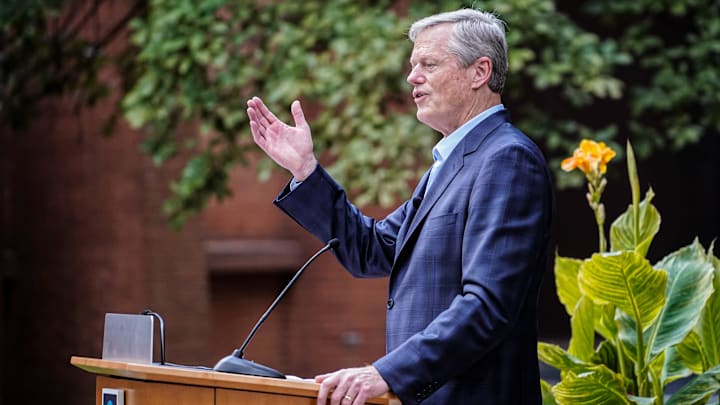After months of wondering what would happen and how athletes would be paid going forward, everything came to a head in June when the House vs. NCAA settlement had a final verdict. The world of college sports would be implementing a revenue-sharing style within each college, and that revenue would be used to pay athletes directly.
Today, July 1, is when that settlement takes effect, and for the first time ever, schools are now paying their players directly, a huge shift in the world of college sports. This new historic movement to pay-to-play is something no one has ever done, so it may be confusing for both the NCAA and colleges, and certainly will be confusing for fans.
Lucky for you, we are here to help walk you through it all the way from how athletes will be paid to who is opting into the revenue share program.
How will athletes be paid?
Starting on Tuesday, July 1, colleges can opt into the revenue sharing with the players. With that, colleges now can pay their athletes directly, but they do have a cap of $20 million annually. The catch is that this money is to be used across all varsity sports, but just one that creates the most revenue, but there is a catch to that as well. Even though this money is meant for all the athletes, the athletic departments themselves get to decide who gets the lion's share of the money.
The starting cap as college sports steps into this new world starts at around $20.5 million, but that number is expected to rise, so much so that it could rise to almost $33 million in the next decade. It is expected that nearly 70% of the fund will go towards bigger programs such as football, but that is where other schools that don't have football programs, or other programs that produce more revenue, like men's basketball, can spend more on those.
While there is no clear answer as to how Title IX will factor into all of this, there is some expectation that some of the money would go towards women's sports. It seems like schools like UConn and Oklahoma will have to give money to the women's basketball and softball teams, since those bring in the championships at those respected schools.
Even though the players will be receiving compensation for their play, some potentially making up to seven figures, they will not be looked at as employees of the schools. Instead, they will be known more as independent contractors, certainly an interesting way to be looked at during school.
Will athletes still be able to sign NIL deals with the new rev-share program?
Some athletes have been making he majority of their money over the last few seasons through name, image, and likeness, or better known as NIL money. When college sports allowed athletes to make NIL money, it seemed like the players were doing anything to make the most money they could, which even meant transferring from school to school each year.
However, while athletes can still sign NIL contracts with the new revenue-sharing program in place, the contracts have to now be sent through a clearinghouse run by Deloitte to ensure a "fair market value." That does mean that the NCAA has the right to prohibit an NIL contract from boosters.
Which schools are eligible for the revenue sharing?
Any school that opted into the House vs. NCAA settlement is able to participate in the revenue sharing, which means schools in the Big 12, Big Ten, and SEC are all eligible for the $20 million share. However, schools in the ACC are being required to a $10 million in revenue over the next three years. Any FBS schools are eligible for revenue sharing, as long as they follow the terms of the settlement, but many will choose not to participate, as this is a major expense to smaller programs.
The creation of the College Sports Commission was for enforcing the salary cap and ensuring that schools follow the terms of the settlement, and working with Deloitte when it comes to NIL contracts. The CSC will ensure player compensation is as it should be, and if schools do not sign onto the new organization, they could be kicked out of their conference.
Is this the end of the settlement?
The short answer to the question is no, as there is still more to be uncovered with this settlement. There are still a lot of questions surrounding the terms of the settlement and certain things within the college sports world, like collective and binding contracts.
While there are still so many questions, the simple ones are answered, players are getting paid, they can still have NIL money, and the major schools are opting into this new world of college sports
